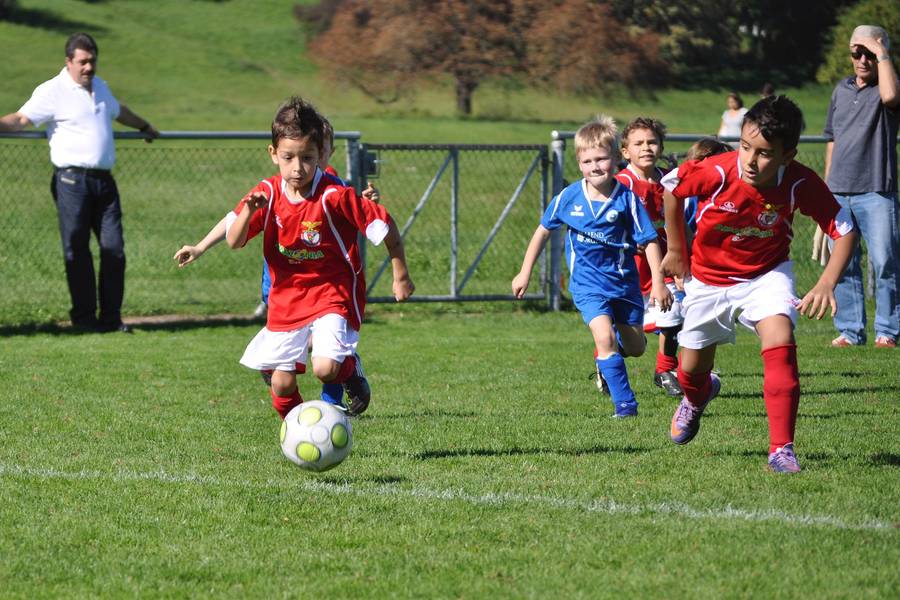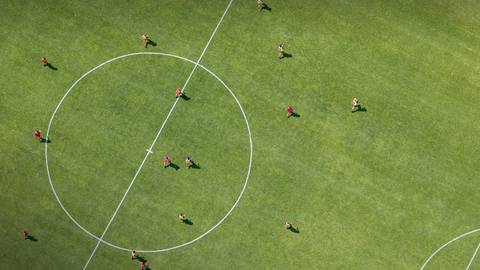
Small sided games have long been an essential part of football serving as a crucial development tool for young players as they learn the fundamentals of the game. While traditional full sized matches offer their own set of challenges and learning experiences, the benefits of small sided formats with its greater scope for more touches of the ball for each player, coping with the ball at quicker speeds and playing in tighter areas are undeniable. These games are designed to maximise involvement, ensuring that every player gets as many touches as possible, rather than being lost in the expanse of a full sized pitch. By reducing the number of players, the game becomes faster, more intense and places greater emphasis on technical skill, quick decision making and playing in 1 vs 1 situations.
It seems as though the powers that oversee the UK game are fully on board with the value of small sided games with the Football Association's recent announcement of proposed changes for the 2025/26 season. Small sided games will play an even greater role in youth development as Under 7s will now play 3 a-side games, ensuring the youngest players receive maximum engagement and opportunities to develop their technical skills. Additionally, 11 a-side football will now begin at Under 14 level, extending the period in which players experience smaller formats. The FA has also committed to evolving the laws of the game to better align with these changes, ensuring that young players transition smoothly through the different stages of development. These adjustments reinforce the importance of small sided football in enhancing skill development, decision making, engagement and ultimately enjoyment of the game.
One of the key advantages of small sided games is undeniably the increased number of touches each player gets in a match. In an 11 a-side game, it is not uncommon for some players, particularly those who are not comfortable in demanding the ball, to go for long periods without significant involvement in the play. In contrast, the smaller format ensures that all players are constantly engaged, receiving and passing the ball far more frequently. This not only accelerates technical development but also builds confidence, as players are repeatedly put in situations where they must control, pass and dribble under pressure.
Beyond touches on the ball, small sided games encourage rapid decision making. With fewer players and a smaller pitch, the game moves at a much higher tempo, forcing young footballers to think and react quickly. In a split second, a player must assess the positioning of teammates and opponents, decide what to do and execute their decision with precision. This constant need for quick thinking enhances football intelligence, a vital skill that translates seamlessly into the full sized game at older age groups as players progress. Notably, some of the best footballers in the world, including Lionel Messi and Xavi, developed their game in small sided environments where quick thinking and technical skill were paramount.
The confined nature of small sided games also places a greater emphasis on technical ability. Players are required to work in tight spaces, which improves ball control and tight dribbling skills. The ability to retain possession under pressure and manoeuvre through compact areas is invaluable, especially for young footballers still developing their confidence and composure. Many professional academies incorporate small sided games heavily into their training, as they mirror the demands of high level football where the athleticism of the players means space and time are limited.
Another critical aspect of small sided football is its role in developing creativity as there is often the need for more improvisation and individual expression. Youngsters are encouraged to try new skills through necessity, beat an opponent in a 1v1 situation and experiment with different ways of
creating and converting goal scoring opportunities. This freedom to express themselves is essential in developing players who can improvise in a moment.
Physical fitness is another area where small sided games make a significant impact. The high intensity nature of these matches means that players are constantly moving, pressing and transitioning between attack and defence. The smaller pitch sizes result in a game that demands agility, quick sprints and rapid changes of direction, all of which contribute to improved levels of athleticism which are important in older age groups. Unlike traditional full sized matches, where long periods of the game might see certain players being passive, small sided games ensure constant engagement and activity, enhancing endurance and explosiveness.
From a coaching perspective, small sided games provide an excellent environment for teaching tactical awareness and positional play. Players are given the opportunity to understand different roles within a team, as the smaller teams necessitate that everyone contributes both to attacking and defensive play. This holistic approach to the game ensures that young players develop a well rounded understanding of football, rather than being restricted to a single position too early in their development. The FA’s decision to extend the use of smaller formats across more age groups ensures that these benefits are maximised over a longer period of time, helping players become more tactically intelligent before transitioning to the full sized game.
As a training tool, the adaptability of small sided games makes them an invaluable tool for grassroots coaches. They can be easily modified to focus on specific aspects of the game, whether it be pressing, passing, defending or attacking movement. By adjusting the size of the pitch, the number of players or introducing specific conditions (such as limiting the number of touches or requiring a minimum number of passes before a goal) coaches can tailor sessions to target particular areas of improvement. This flexibility allows for an engaging and varied training experience that keeps young players motivated and continually learning.
The fast paced nature of small sided matches means that mistakes are inevitable, but players quickly learn to recover and move on which is an important aspect of the game. Unlike an 11 a-side match, where a player might be left to reflect on an error for some time, small sided games require players to immediately refocus and provides immediate opportunities for redemption. This teaches youngsters to maintain focus and respond positively to setbacks. This ability to bounce back from mistakes is a crucial skill, not only in football but in life. Additionally, playing in smaller teams provides a sense of responsibility, as there are fewer places to hide and each player's contributions are more directly impactful on the outcome of the game.
There are several additional benefits of small sided games that should not be overlooked. Football is a team sport, and these matches encourage communication, cooperation and camaraderie. Players learn to work together, support each other and celebrate successes collectively. The inclusive nature of small sided football ensures that all players are involved, reducing the likelihood of individuals feeling left out or disengaged.
With the FA's decision to extend smaller formats across more age groups and evolve the laws of the game to align with these changes, grassroots football is set to become even more developmentally focused. While I’ve heard some responses that question whether delaying 11 a-side football until Under-14s is beneficial, the reality is that small sided games provide young players with a better foundation in technique and decision making before making the transition and as such, I’m all in favour. Countries such as Spain and the Netherlands, renowned for their player development have long prioritised smaller formats for younger age groups, producing some of the world's most
technically gifted players. These adjustments ensure that young players get the best possible foundation and will help the next generation develop the skills and confidence needed to thrive at all levels of the sport.


















